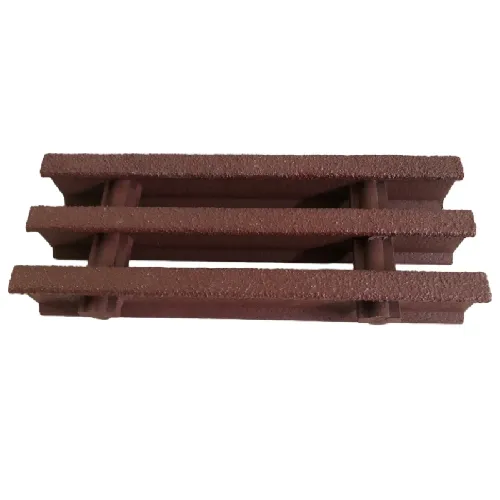loading...
- No. 9, Xingyuan South Street, Dongwaihuan Road, Zaoqiang County, Hengshui, Hebei, China
- admin@zjcomposites.com
- +86 15097380338
- Welcome to visit our website!
Exploring the Applications and Benefits of FRP C Channels in Modern Construction Projects
Understanding FRP C Channels The Future of Structural Materials
In the realm of construction and engineering, the emergence of innovative materials has revolutionized the way structures are designed and built. Among these materials, Fiber Reinforced Polymer (FRP) has gained significant attention for its superior performance characteristics. Specifically, FRP C channels represent a pivotal advancement in structural applications, combining strength, durability, and lightweight properties.
What are FRP C Channels?
FRP, or Fiber Reinforced Polymer, is a composite material made from a polymer matrix reinforced with fibers, usually glass, carbon, or aramid. These fibers provide exceptional tensile strength, while the polymer offers corrosion resistance and lightweight properties. When we refer to FRP C channels, we are talking about structural components shaped in a 'C' cross-section, akin to traditional steel channels. However, FRP C channels deliver enhanced performance and versatility across various applications.
Advantages of FRP C Channels
1. Corrosion Resistance One of the standout features of FRP C channels is their exceptional resistance to corrosion. Unlike traditional steel, which can corrode over time due to environmental factors, FRP materials maintain their integrity, making them ideal for use in harsh environments, such as marine applications, chemical plants, and wastewater facilities.
2. Lightweight Nature The low density of FRP materials means that FRP C channels are significantly lighter than their steel counterparts. This characteristic facilitates easier handling and installation, reducing labor costs and improving efficiency on job sites. Lightweight structures also lead to less demand on foundation systems, further enhancing overall design efficiency.
frp c channel

3. High Strength-to-Weight Ratio Despite their lightweight nature, FRP C channels boast impressive strength. This high strength-to-weight ratio means that they can support substantial loads while remaining easy to work with. Engineers can design structures that use less material without compromising safety or performance.
4. Thermal and Electrical Insulation FRP is a poor conductor of heat and electricity, making it an excellent choice for applications where thermal insulation is critical. This property makes FRP C channels suitable for use in electrical and thermal environments where conventional materials may fail.
5. Design Flexibility The manufacturing process of FRP allows for the creation of custom shapes and sizes, giving architects and engineers the flexibility to design innovative structures that meet specific project requirements. Customization can enhance aesthetic appeal and performance, making FRP C channels a go-to solution for modern construction projects.
Applications of FRP C Channels
FRP C channels find a multitude of applications across various industries. In the construction sector, they are used in bridges, buildings, and other structural components where weight and durability are paramount. In the marine industry, FRP C channels are utilized for docks and piers, where exposure to saltwater and harsh weather conditions could lead to the rapid deterioration of traditional materials. Other applications include transportation, aerospace, and even sports equipment, highlighting the versatility of FRP C channels.
Conclusion
As the demand for sustainable and efficient construction materials continues to grow, FRP C channels represent a forward-thinking solution that addresses many modern engineering challenges. Their unique combination of lightweight properties, strength, corrosion resistance, and adaptability positions them as critical components in the future of construction. By embracing FRP technologies, architects and engineers can push the boundaries of design while ensuring the longevity and performance of their structures. As the industry evolves, FRP C channels stand as a testament to innovation in structural materials, promising a more sustainable and efficient future in construction.
-
GRP Structures: The Future of Lightweight, High-Performance EngineeringNewsJun.20,2025
-
FRP Water Tank: High-Performance Storage for Corrosive and Clean Water SystemsNewsJun.20,2025
-
FRP Square Tube: The New Industry Standard for Chemical and Structural ApplicationsNewsJun.20,2025
-
FRP Pultruded Profiles: The Ultimate Choice for Lightweight Structural StrengthNewsJun.20,2025
-
FRP Handrails: The Safer, Smarter, and Stronger Choice for Modern InfrastructureNewsJun.20,2025
-
FRP Grating: The Smart Solution for Durable, Lightweight Industrial FlooringNewsJun.20,2025
-
Why Choose a Galvanized Water Tank for Your Storage NeedsNewsMay.21,2025
